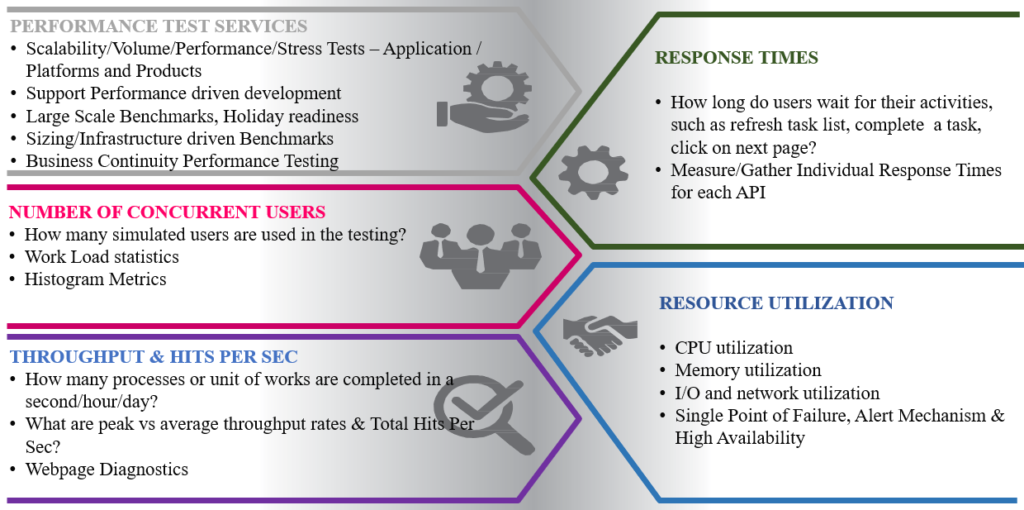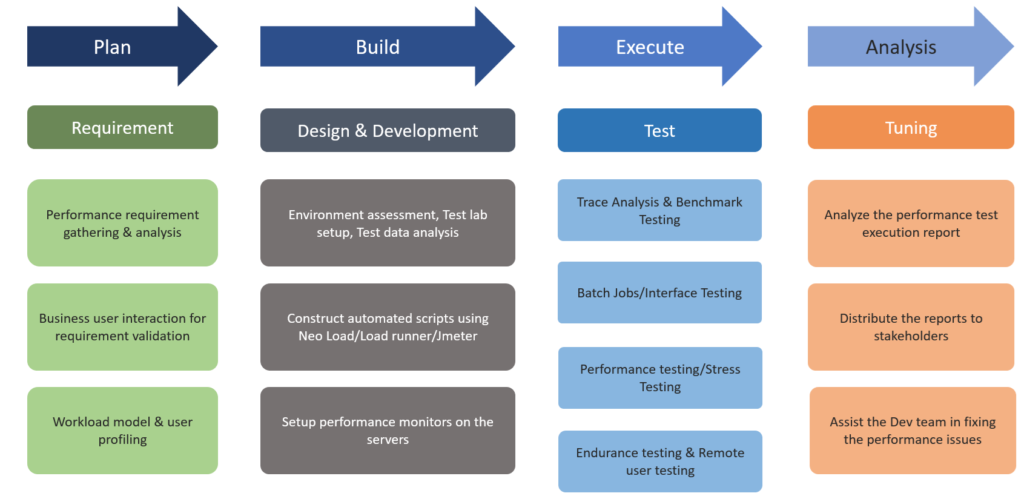Performance Testing
Performance Testing is an important non-functional test phase that gauges system stability and response time under different workloads.
Frequently referred to as Load or Stress Testing, Performance Testing encompasses both types of testing.
Load Testing determines the ability of infrastructure to support the expected usage of a system, while Stress Testing examines the ability to cope with exceptional transaction volumes.
- At SVT Testing, our dedicated Performance team uses cutting-edge technologies, such as our in-house accelerators, custom dashboards, and pre-deployed Cloud injector machines, to measure software reliability at load. These techniques enable us to rapidly deliver a quality service to our customers at a significantly reduced cost.
Performance Test Approach
Why Performance Test?
There’s no doubt that Performance Testing is critical to successful business operations and end-user satisfaction. If below par, the reliability of your websites, apps, and systems will be noticed, and may seriously undermine your commercial objectives.
There are three core reasons for Performance Testing, which we examine in detail below:
- Preventing system crashes
- Achieving acceptable response times
- Mitigating scaling risks
Performance Testing Framework Approach
Preventing system crashes
No doubt, the nightmare scenario for most companies is when high levels of traffic bring systems grinding to a halt.
According to Atlassian, website downtime incidents are not only potentially toxic to customer trust and loyalty, but they’re also the financial grim reaper. Crashes aren’t just harmful because of the opportunity cost of downtime, but also due to the very real possibility of reputational damage.
Good Performance Testing, therefore, aims to identify and remedy problems that would otherwise cause a website to crash, before go-live.
Achieving acceptable response times
Similarly, as technological standards continue to rise, users’ tolerance for website waiting times is falling drastically. According to research carried out by Google, when websites fail to load within 5 seconds for mobile users, the probability of these users ‘bouncing’ – abandoning the site to find a different resource – increases by an average of 106%.
Again, good Performance Testing works to mitigate this risk by achieving exceptional response times and thereby streamlining the overall user experience. In turn, this means more online traffic for your business, with an increased likelihood of conversions.
Mitigating scaling risks
Finally, as your business grows, new customizations and interfaces between systems have the potential to create performance bottlenecks. Applications need to be able to scale, and their performance requirements met well into the future. Manual regression testing is one solution to this problem, but the process is often slow and calls for close monitoring to ensure meaningful results.
When implemented as an automated solution, Performance Testing means these issues are caught as the application grows, so that fixes can be quickly deployed and tests maintained for future use. The risk that comes with scaling up is effectively mitigated, leaving you free to focus on other aspects of the business.



